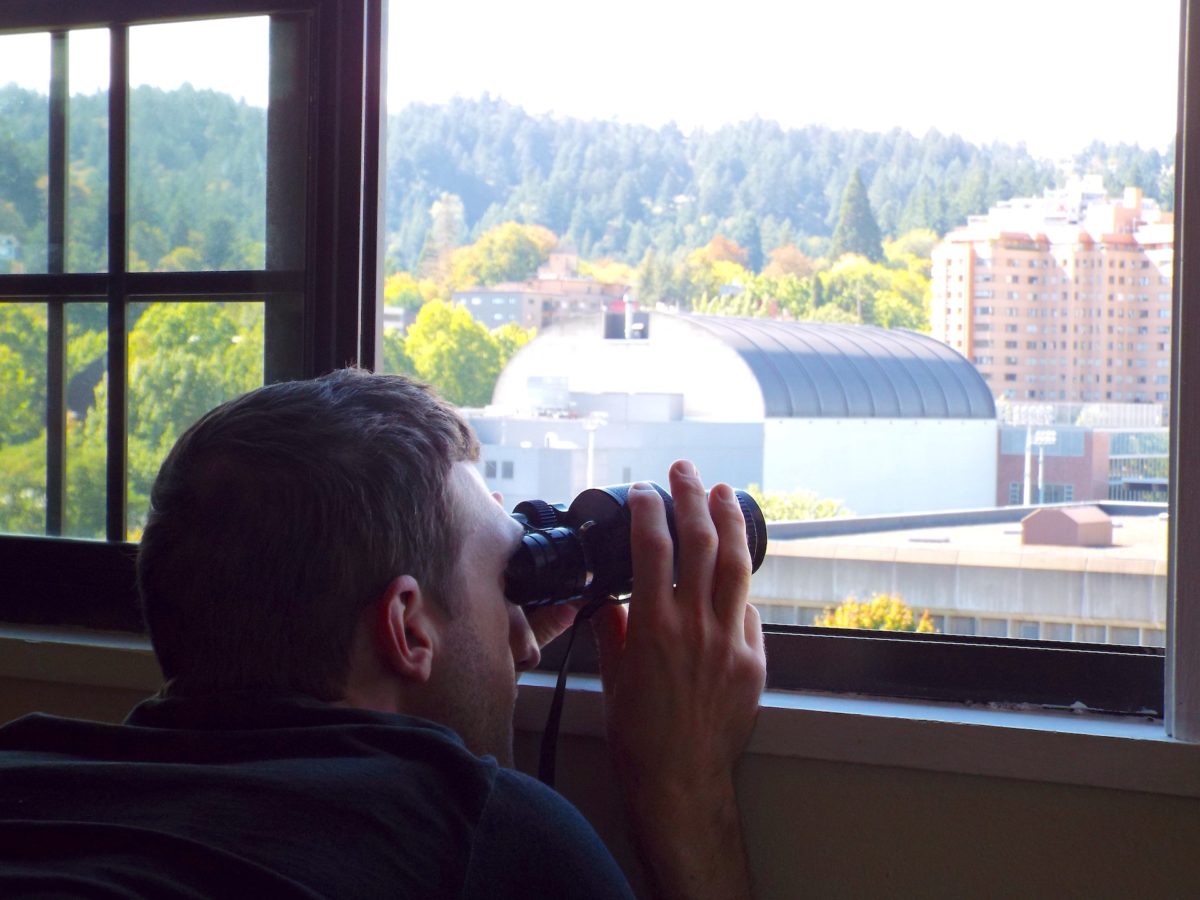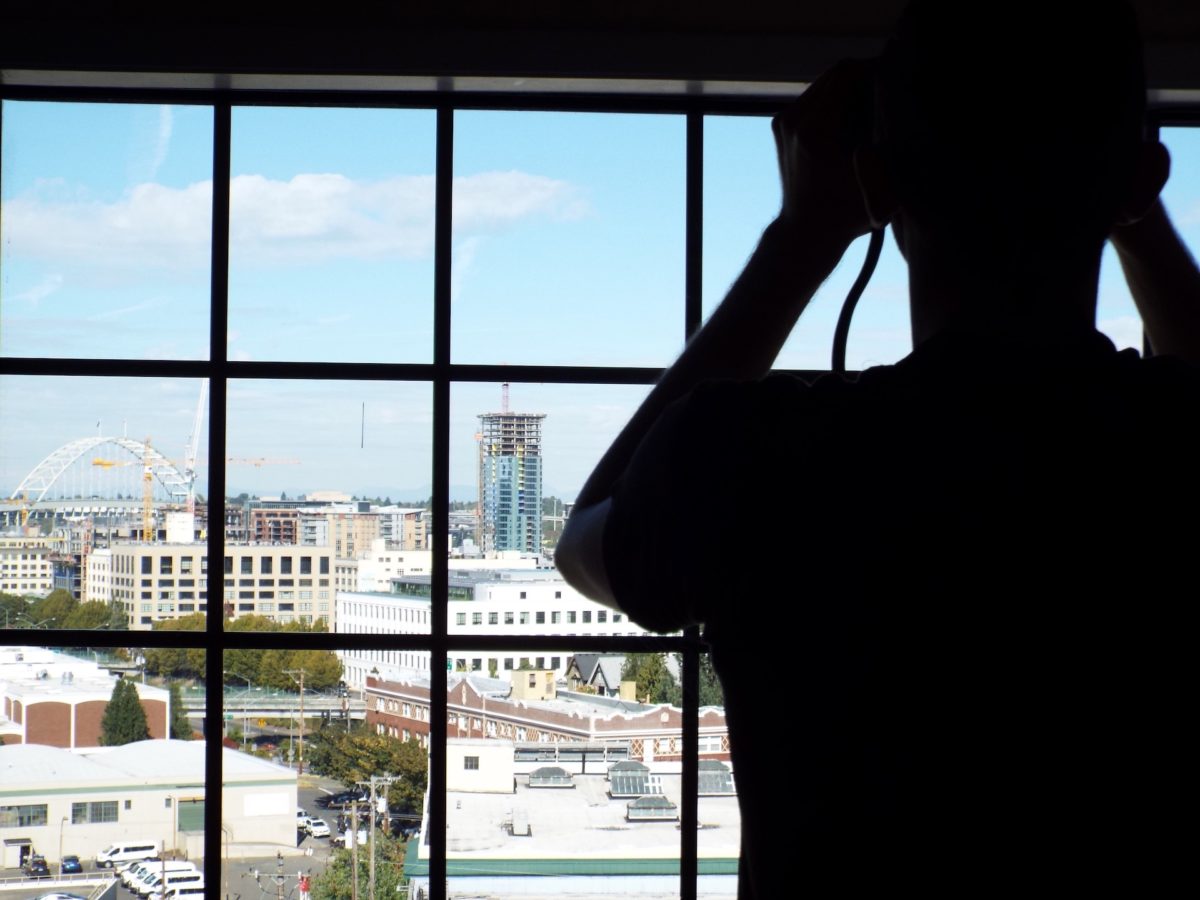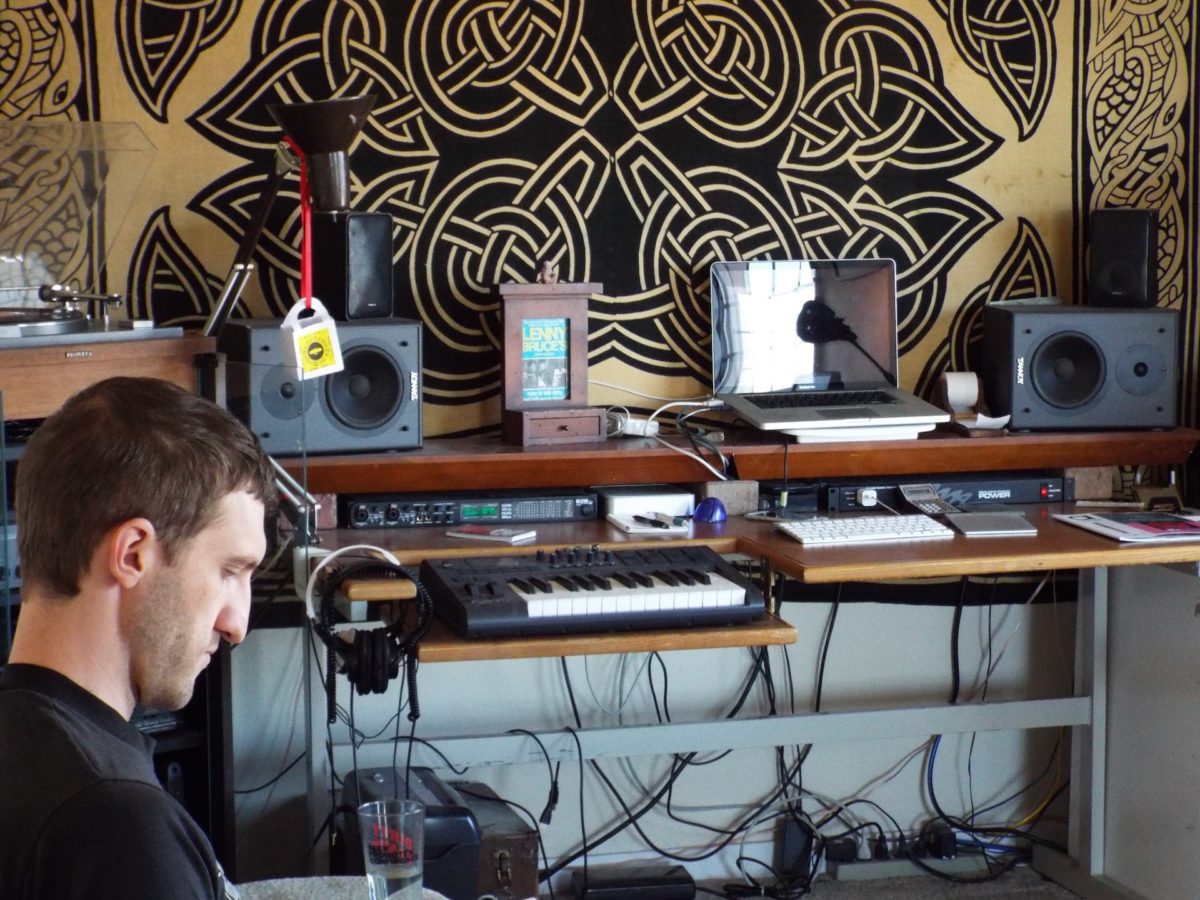Part 3
Through Branding
There is another angle of the media that actually kept me afloat throughout the booms and busts from 2011 through 2014. I delivered the Portland Mercury, a weekly liberal arts and entertainment tabloid — I estimate at least a half million units passed through my van, traversing the routes that connect Portland’s suburban southwest hills to her urban northeast flats.
When I returned from California, broke and deflated, I managed to pull myself up by the boot straps because of this gig. I was able to resume my delivery route and start saving money for a cheap room. In fact, Todd had taken it over for me, borrowing the van while I was away.
I had the comfort of a couch and friends to help me get it together, and before long I was moving into a $425 room in Kenton. The house had no internet. I used the library and local cafe wifi. At least it got me out of the house.
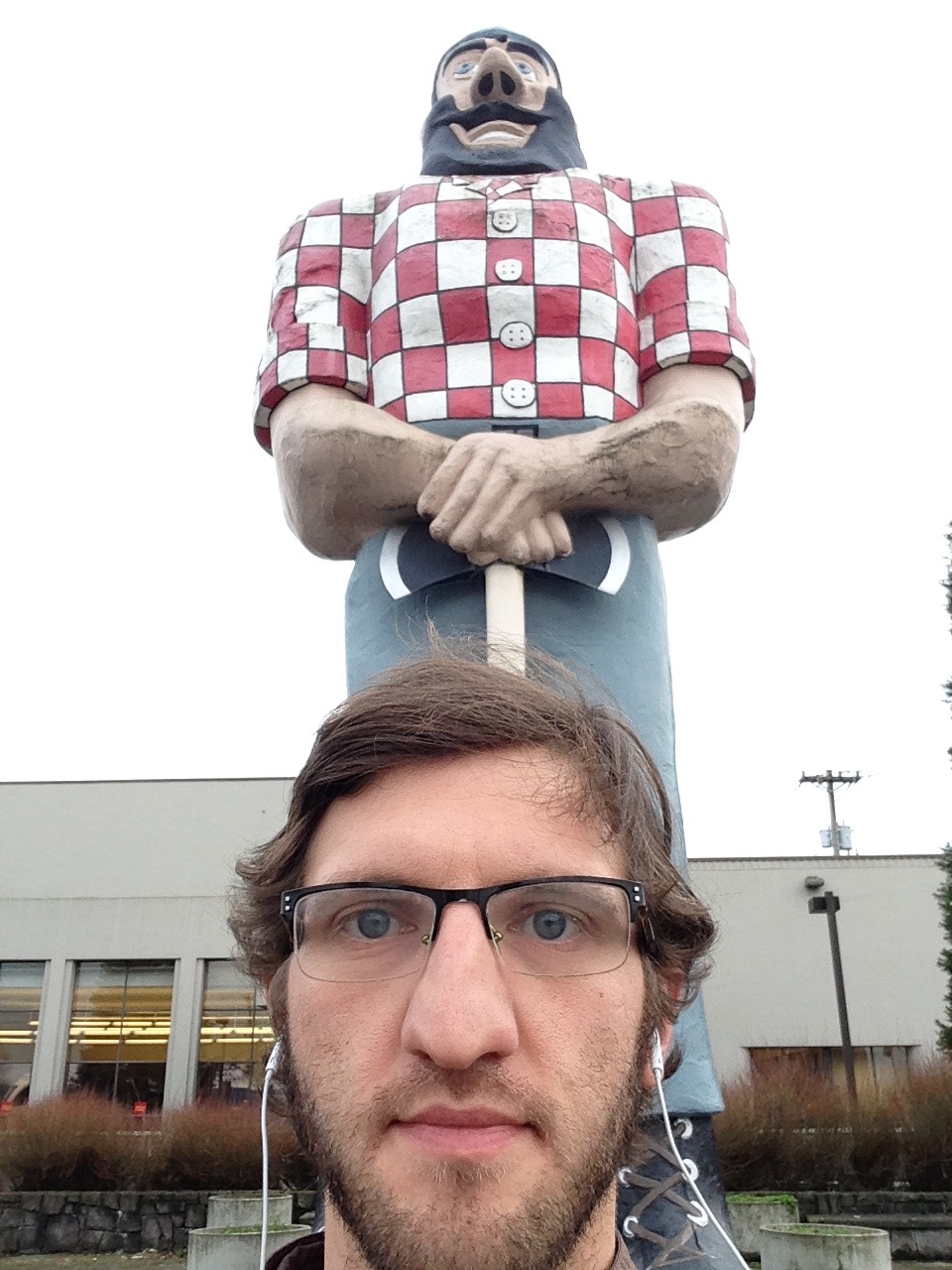
I began work on a company with no money, no clients, and just a few dozen blog posts altogether bringing very little traffic. All I knew at the beginning was that I needed to pool the intellectual property from Arts Happening with my personal blog and podcast, onto a new site. But what shall it be named?
I knew that Horizon at End Times would be a troublesome title for a website because there was so much talk about the rapture going around those days. I didn’t want to attract the wrong crowd.
Ambit was the best that I could think of. It means a pivot point, or sphere of influence.
I searched for comparable brands but only saw technology companies and unrelated industries. I found variants of Ambit Magazine for web domain registration, specifically dot coms, so I grabbed two: “ambitmag” and “ambitmagagazine” dot com.
The brand was Ambit Produce. Tag line: Organic Media and Arts. I was experimenting. It was humorous. I wanted something silly like WorldWide Pants, for a production and publishing company.
Around this time, in April of 2014, I met Kate Dolan. It was a sudden and impactful experience for both of us. We had an undeniable attraction that takes no work to develop. We started dating and going steady immediately.
She had recently finished her degree at Portland State University in english literature, as she had her own dreams of being a novelist or journalist, like Joan Didion or Anne Sexton, and she loved the idea that I was going for a writing career and doing it my way (she was raised on Sinatra).
No sooner did this encounter change my life than another chance meeting with Penthouse #3 at The Lafayette building (established 1927) in the Goose Hollow district of Portland.
Nothing special as apartments go, in fact, it was weird. Four apartments were converted in the 1970’s from a 4-Bedroom penthouse mansion. Each unit averaged 425 sq. ft. and had something 1920’s original and something 1970’s funky.
It was more than I could afford but I had parents cosign and it seemed like a unique opportunity. It was a fair priced one-bedroom apartment for the area at $900. I visited the building for their studios but felt the opportunity would force me to make more money.
Hosting meetings in this space was great. People enjoyed coming over. Writing all day indoors felt okay because it was a brightly lit room, airy, with the buzz of a city a hundred feet below. Looking into a deep horizon, I hear is actually good for mental health.
Over the course of 2014, I gradually built direct relationships with arts organizations, getting press access to events, building our reputation as a serious publication.
Publicists enjoyed our work because it was less polished, less formulaic, more heartfelt, thoughtful, and personal. They forgave my shortcomings. There was a real need for more arts coverage in the city. This is true of almost every city. There is always more room because there are always events that aren’t getting reviewed.
It seems that the more we published, the stronger our traffic was, and suddenly we were noticed by someone that would make it almost impossible to keep Ambit going.
There was a literary publication in London called Ambit Magazine, and they were pissed when they discovered we shared a name. They only had a UK web domain and they were established as a paper magazine in the 1950s. They didn’t own the dot coms, so I didn’t see them immediately. We talked it out. It was best for me to give up the domains. Honestly, they’re fortunate that I bought them before someone else, because I never meant to hijack their brand.
The truth is, I was aware of them. I believe I simply bought the dot coms and did no further research on the name. If I googled it, it was after the fact, and I disregarded the risk. It was foolish.
I didn’t want to turn back. Like so many things in life, I should not have rushed my branding in the first place. I was anxious about starting something. I didn’t research and give myself a list of options.
I stink at coming up with brand names and titles. After discovering the UK Ambit Magazine, some part of my brain was trying to hatch a new name, but it never came.
The person that came up with “thru” as a brand name was Kate. To her, it was a reference to our subjective approach to reporting. I liked it also because it contains action, and the name lends itself to a tiered product and service line.
Kate became partner to the startup, but this took some grooming. It started with her contributing an article. I remember it, an essay about Anne Sexton. She took it very seriously. Of course that led to more contributions. Then I asked her to edit my posts, and finally other contributors’ posts.
In May 2015, she moved into PH3 with me and she accepted the role of Chief Editor. She maintained that role until the end, editing every new post. As publisher, I proofread everything. Me took the work back and forth until revisions satisfied our editorial needs.
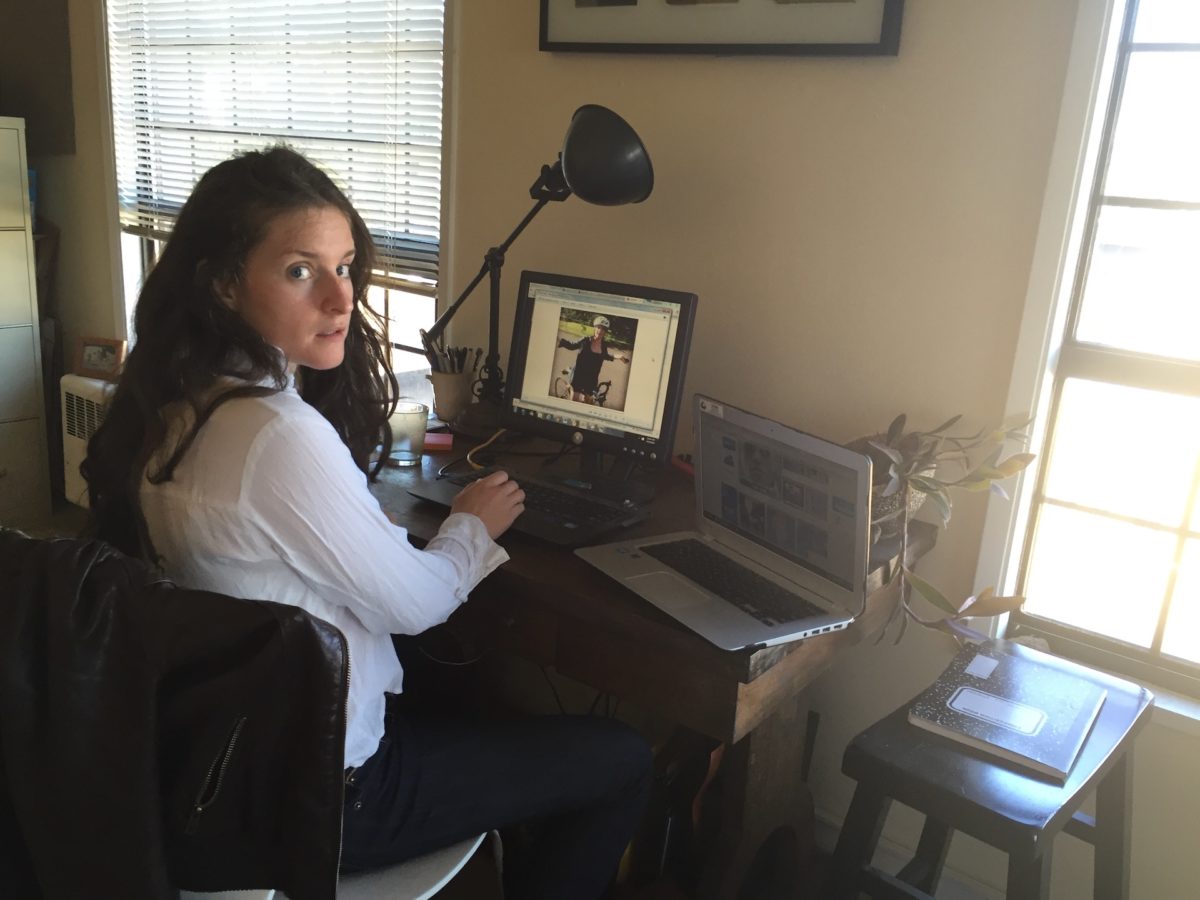
We didn’t have a consistent voice, in a sense inconsistency became standard. There is diversity to that. The more contributors we took on, the more we realized we needed to standardize punctuation and that kind of thing, which was pretty off the wall in the beginning. Eventually, we adopted the New York Times style guidelines, and cleared up confusion over things like “into” versus “in to.”
Concerning our editorial integrity, I tried very much to accurately represent the veracity of my claims in the footnote citations. Every article was sourced and every source was studied. I tried my best to be impartial, to learn from fact, not spin.
Mostly, we published creative content, and arts reviews. Very little investigation and fact-checking goes into a poem, for example. Arts performances always come with the facts represented in press releases and program magazines provided at the event. Publicists always got back to us if there was an error. We published correction notes at the foot of every article that got them.
I dreamed of a decentralized corporate model for Thru Media, LLC. Portland would be the HQ, but operations would expand worldwide. My inspiration was Vice Media, only taking anarchist values the whole way. I wanted to launch in more cities, to open satellites operating with editorial independence, financially supported by a central worker-owned corporation.
This means each local edition would be THRU Portland, THRU Tucson, THRU Philadelphia, and so on. The master front page of THRU would evolve into a curated selection from across the country, but you could enjoy independent sites devoted to your area. It becomes a national record of local content, and eventually, a global record of local content.
Yes, I am a big dreamer.
Beyond publishing, if we used the existing talent in the company, we could offer production services. THRU Video, for example, could be the name of a YouTube channel featuring all of our original videos, but could also be a branch of the company that produces video content as a service. The magazine advertises the service branch.
It was not so different from what print publishing models already did. There is one large publishing company probably with a boring name that owns several papers all over a region. For example, the same company publishes Seattle’s The Stranger and The Portland Mercury.
Being a delivery man was actually educational. I helped calculate readership by removing unread papers from a location. The ratio between readership and distribution is just that. I saw how other weekly papers were massively over-distributed to inflate the value of their advertising. We provided the most accurate readership estimate of any free paper, I believe.
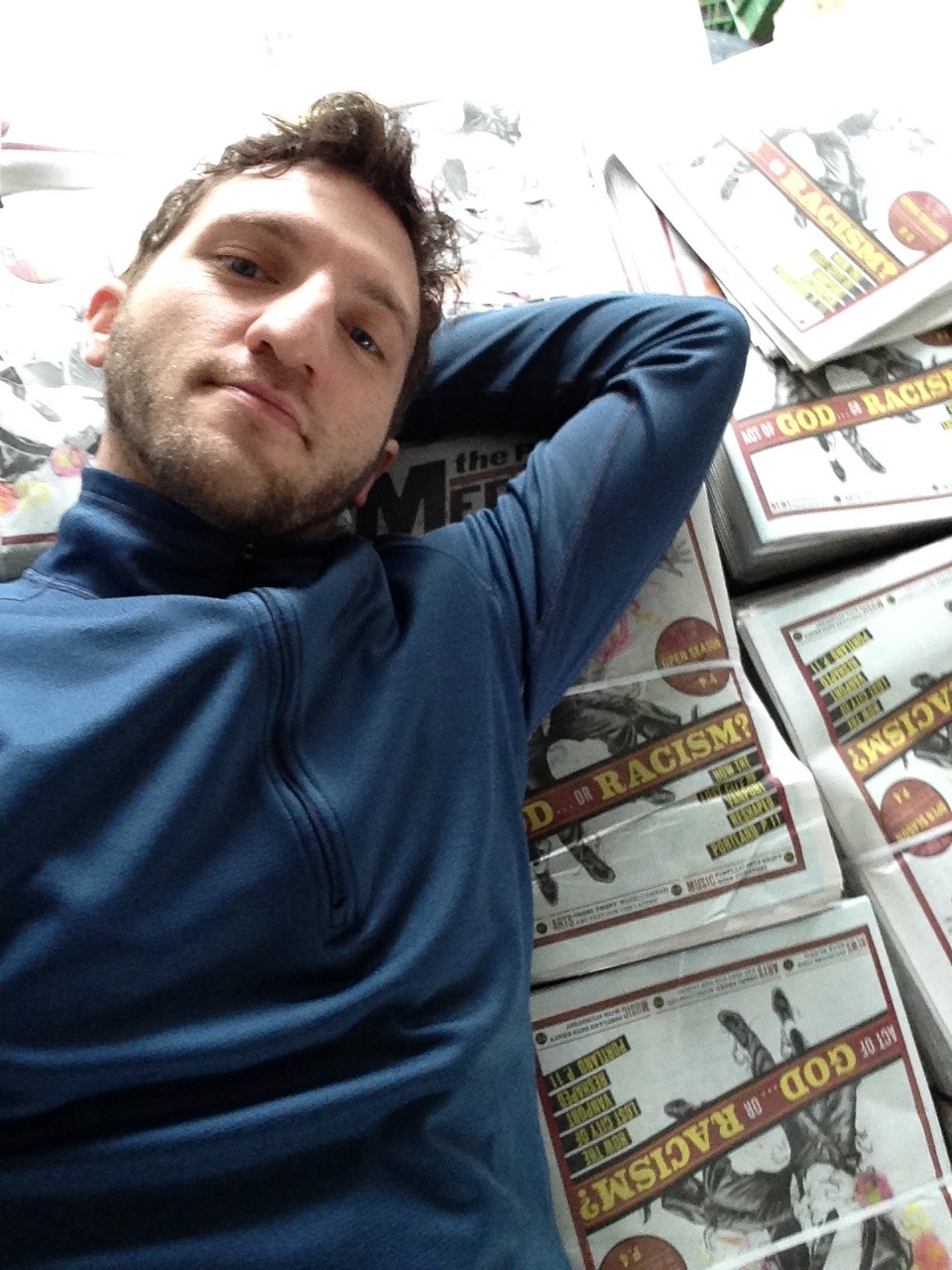
Counting web readership is trickier than that but it follows the same principle. There are page view, unique visits, return visitors, bounces, and more variables involved with calculating readership. A subscription, even just to a free email newsletter, is a more direct path to calculating readership. Discriminating bounces from views, unique visits from repeat visitors, and seeing traffic for individual articles gives you much more to work with.
I also noticed that Portland Mercury made a good deal of profit from event production. They simply took their audience, promoted an event to them, and in many cases used sponsors as vendors — the whole structure of a magazine is an apparatus for event production. What takes one event planner 100 hours to accomplish, a magazine can distribute across a staff of 10 or more, without hiring anyone. I knew event production. And therefore THRU Events would also be an aspect of my long game for this company.
I resigned from delivering the Mercury early in 2015, believing I would be able to support myself with freelance work and eBay sales, cushioned by a few bucks in the bank, just long enough to get advertising revenue from the magazine, or a stable contract, or both.
As far as operating the business goes, I floundered. I knew about sponsorships because I ran festivals for years. I have pitched and sold many sponsorships, but this was more challenging for me. I realized that there was a key difference between a community with a vested interest in a local festival versus a magazine upstart that may not deliver ROI for the sponsor.
Feeling insecure about my product, my strategy was to establish the magazine, prove it had readership, and then approach sponsors.
This issue with the Ambit name had to be resolved before getting sponsors anyway, so as we prepared to rebrand, fending off the Brits, I wanted to make the most of it. We needed to have the digital equivalent of a grand reopening. So I coordinated an Indiegogo campaign, thinking this could provide the jet fuel for relaunch.
Ingrid Horton developed a complete aesthetic concept for THRU. Her logo mashes the type together, reducing the word to an iconic shape rather than a sequence of independent parts. It is bold, pushing itself in your presence, demanding that you have a look through. She utilized a common road symbol that if associated with THRU could become a subliminal brand reinforcement in daily life, like unlike apples to Apple, and windows to Microsoft.
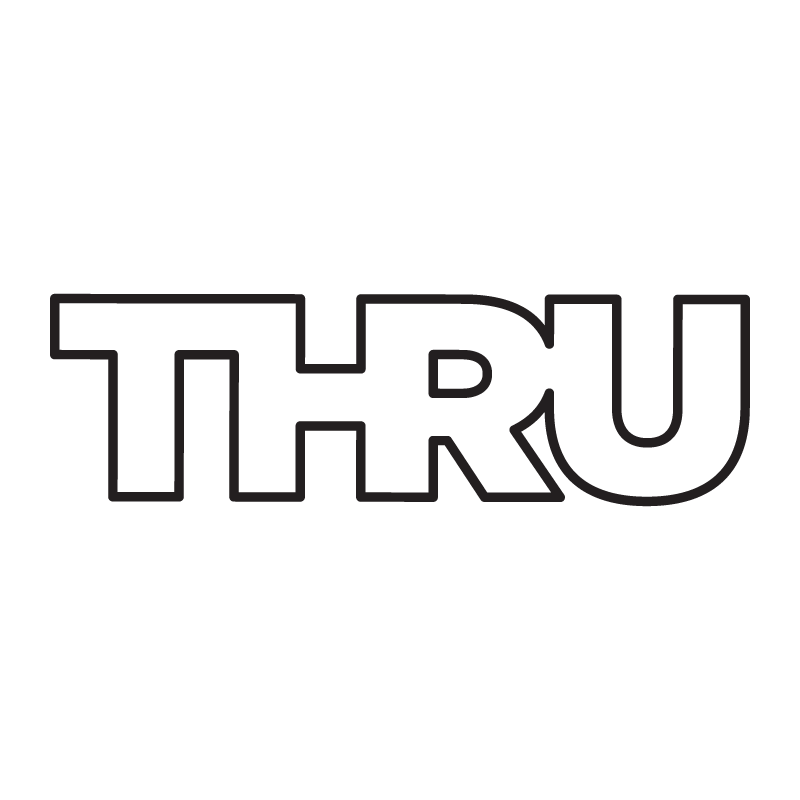
Kate and myself established Thru Media as an LLC in Oregon, in July 2015. The Indiegogo launch happened in August.
There is only one thing I would do differently with that campaign. I would have set the goal very low. I had friends, peers around that time that shot for $1,500 with their indie media projects. It is a low yet respectable figure, and it fairly reflects the base minimum capital required to own an internet property.
One of the big strategies for going low is that, if you meet the goal, you get to keep your campaign alive on Indiegogo indefinitely. If you fall under goal, the campaign is closed forever. This failed to make it into my calculus.
I wanted to go bold: $10,000. We got $1,800.
We performed as well as our Portland peers, but the appearance became failure in a morale sense. This crucial detail would have changed the spirit of our work going forward.
A month later, we were getting over it. The feeling going into the 2015 T:BA Festival was improved. I acted more like a Publisher and directed the writers to aim for a level of coverage that would show what the magazine could do. It went pretty well and we had a great time.
A cycle was repeating itself, however, much like in 2013, my personal finances were set aside as I hoped to bank on a creative project. The last gasp of summer, I put all my energy into T:BA. I could ignore it through the festival, but it was already too late. I was going broke again.
By the end of the year, the magazine and my relationship with Kate had almost disintegrated. I bounced back, again, relying on friends.
